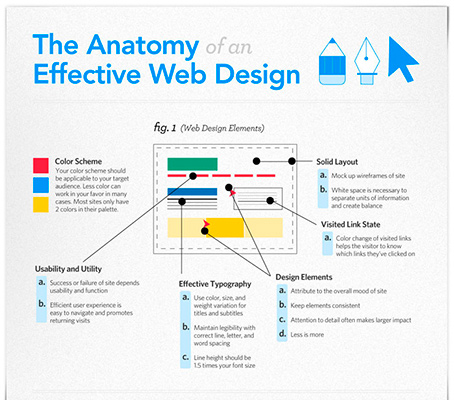Discouraged With Slow-Moving Loading Times And Confusing Navigation? Discover Just How Responsive Style And Maximized Page Rate Can Improve Your Site'S Individual Experience
Discouraged With Slow-Moving Loading Times And Confusing Navigation? Discover Just How Responsive Style And Maximized Page Rate Can Improve Your Site'S Individual Experience
Blog Article
Material Created By-Herrera Henriksen
Have you ever checked out a web site that took forever to tons, had a complex navigation system, or didn't present correctly on your mobile device? Chances are, you promptly deserted that website and went on to one that offered a far better user experience.
In today's competitive online landscape, it's important for organizations to focus on website design that boosts user experience in order to drive better conversions. In this discussion, we will explore the importance of responsive style, the use of instinctive navigation, and the optimization of page lots speed to develop a smooth and engaging customer journey.
Keep tuned to uncover exactly how these aspects can dramatically affect your site's success.
Value of Responsive Style
Receptive style is crucial in today's digital landscape for creating internet sites that adapt effortlessly to different display dimensions and tools. When your web site is receptive, it immediately readjusts its layout and material to fit any gadget, whether it's a smartphone, tablet, or computer. This is critical because an increasing number of people are accessing the web with their mobile devices.
If ada website compliance guidelines isn't receptive, it can bring about an inadequate individual experience. Customers may have to squeeze and zoom to read web content, switches may be also small to click, and images might not be optimized for smaller sized displays. This can discourage users and result in high bounce rates and reduced conversions.
Utilizing User-friendly Navigating
When developing a receptive site, it is very important to concentrate on utilizing user-friendly navigating for a boosted individual experience.
Instinctive navigation refers to organizing your internet site's food selection and navigating components in a rational and straightforward means. By doing so, you make it simpler for visitors to find what they're trying to find and browse via your website effortlessly.
User-friendly navigation helps in reducing confusion and irritation, inevitably resulting in far better customer involvement and enhanced conversions.
To achieve instinctive navigating, think about making use of clear and detailed labels for your menu things, implementing a constant format across all web pages, and integrating search capability for quick access to specific material. Furthermore, it's essential to prioritize essential web pages and information, ensuring they're prominently presented and conveniently available.
Optimizing Page Lots Speed
To enhance user experience, it's important to maximize the page load rate of your web site. Slow packing times can annoy individuals and lead to higher bounce rates.
Fortunately, there are numerous techniques you can execute to boost your internet site's lots speed. Firstly, think about reducing website content services of your pictures by compressing them without endangering high quality.
In addition, optimize your code by minimizing unneeded scripts and CSS data. One more reliable method is to utilize browser caching, which allows specific aspects of your web site to be saved locally, lowering load times for returning visitors.
Moreover, take into website design and seo packages using a content delivery network (CDN) to distribute your site's files across numerous web servers, enhancing lots speed for users in various geographical locations.
Verdict
In conclusion, by using receptive design, instinctive navigation, and maximizing page tons rate, website design can dramatically enhance individual experience and drive far better conversions.
With a straightforward user interface, simple navigation, and quick packing times, internet sites can catch and preserve the focus of users, resulting in boosted involvement and higher conversion rates.
So, do not delay in applying these website design approaches to ensure a smooth and successful customer experience!
